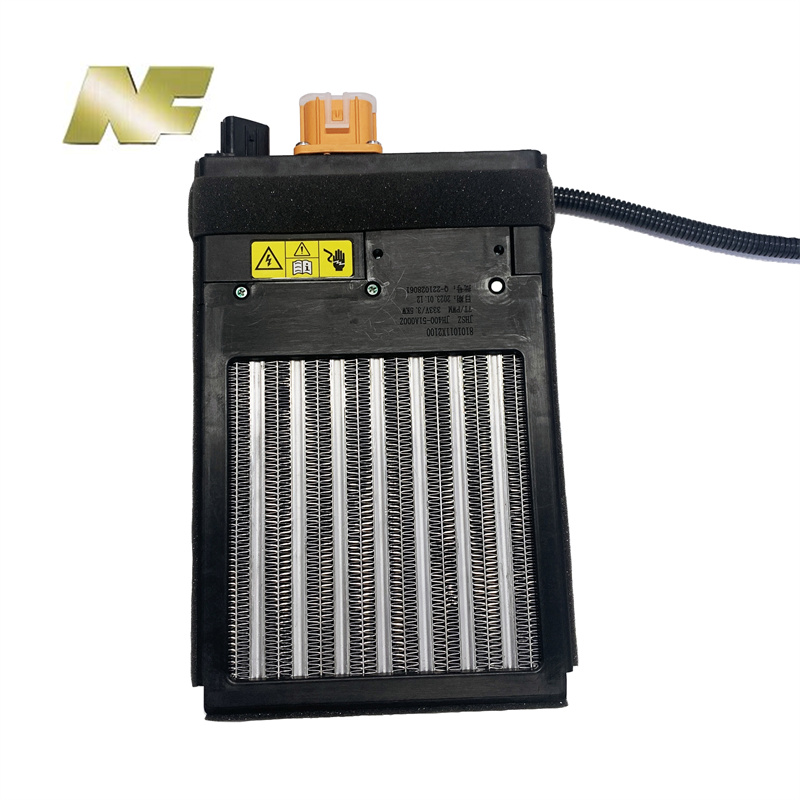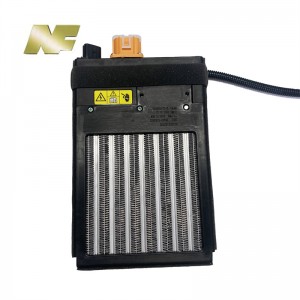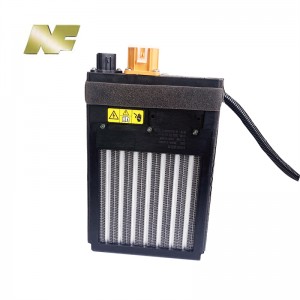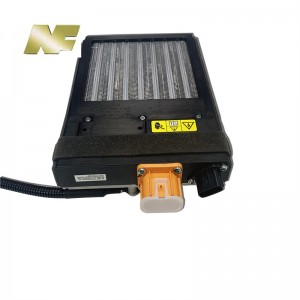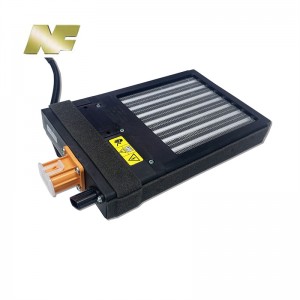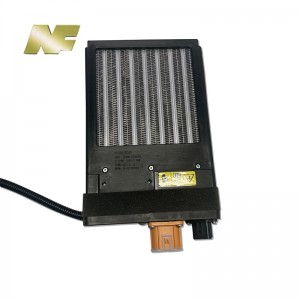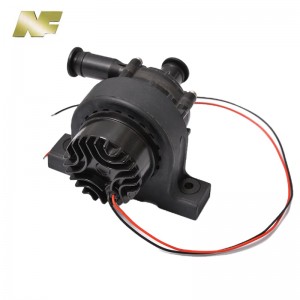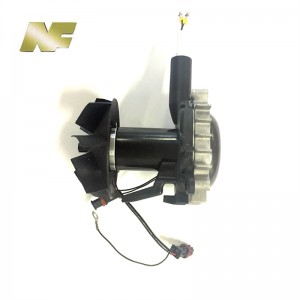NF Best PTC Air Heater 3.5KW EV PTC Air Heater
Description
Are you looking for a reliable heating solution for your electric vehicle? EV PTC air heater is your best choice.
EV PTC air heater is a heating device specially designed for electric vehicles. It works by using a positive temperature coefficient (PTC) ceramic heating element. These ceramic elements have the unique property of increasing resistance as temperature increases, allowing them to generate heat in a controlled and safe manner.
One of the main advantages of EV PTC air heaters is their efficiency. It can convert up to 90% of electrical energy into heat, making it one of the most energy-efficient heating solutions on the market.
Another benefit is its compact size. EV PTC air heaters can be installed in tight spaces, ideal for electric vehicles with limited interior space.
In addition to being highly efficient and compact, EV PTC air heaters are also environmentally friendly. It produces no emissions and reduces the overall carbon footprint of electric vehicles.
There are many options to choose from when choosing an EV PTC air heater. Some factors to consider include heating capacity, power consumption, and installation requirements.
Overall, the EV PTC air heater is a reliable and efficient electric vehicle heating solution. It offers many benefits including energy efficiency, compact size and eco-friendliness. Choose EV PTC air heaters for a comfortable, safe and sustainable driving experience.
Technical Parameter
| Rated Voltage | 333V |
| Power | 3.5KW |
| Wind speed | Through 4.5m/s |
| Voltage resistance | 1500V/1min/5mA |
| Insulation resistance | ≥50MΩ |
| Communication methods | CAN |
Product Size

Application

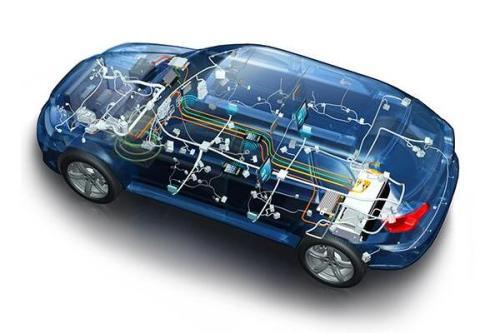
FAQ
1. What is a high voltage PTC air heater?
High-voltage PTC (positive temperature coefficient) air heater is an electric heating device that uses PTC ceramic elements to generate heat. These heaters are commonly used in a variety of applications that require efficient heating of air, such as industrial processes, automotive systems, and HVAC systems.
2. How does the high voltage PTC air heater work?
The working principle of the high-voltage PTC air heater is PTC ceramics, and its resistance increases sharply as the temperature rises. When current passes through the PTC ceramic element, it generates heat due to its self-regulating properties. The heater maintains a constant temperature up to specific design limits without the need for additional control circuitry.
3. What are the advantages of using a high-voltage PTC air heater?
High-pressure PTC air heaters have the advantages of fast heating, self-regulation, energy saving, and safety. They heat up quickly, reaching the desired temperature in seconds. A self-regulating feature prevents overheating, making these heaters safe to use. Additionally, they require less energy to operate than other heating methods.
4. Can high voltage PTC air heaters be used in hazardous environments?
Yes, High Pressure PTC Air Heaters are available for use in hazardous environments. Designed to safety standards, these heaters can withstand extreme conditions such as high temperature, vibration and corrosive atmospheres. They are typically used in applications requiring explosion proof or ATEX certified heating solutions.
5. Are high voltage PTC air heaters suitable for outdoor applications?
Yes, High Voltage PTC Air Heaters are suitable for outdoor applications. They are typically used in outdoor cabinets, cabinets or equipment that may be exposed to low temperatures, humidity or freezing conditions. These heaters prevent damage from condensation and keep electronic components functioning properly in outdoor environments.
6. Can the high voltage PTC air heater be used as the main heating source?
High pressure PTC air heaters are primarily designed to be used as auxiliary heaters, not as primary heating sources. They are often used to supplement existing heating systems or to provide targeted heating in specific areas. However, for smaller spaces or well-insulated environments, they can be used as the sole heat source.
7. Does the high voltage PTC air heater need regular maintenance?
High pressure PTC air heaters do not require regular maintenance. The self-regulating feature of PTC ceramics prevents overheating, eliminating the need for complex control systems. However, it is advisable to check the heating elements for dust or debris build-up and to clean them regularly to ensure optimum performance.
8. Can the high-voltage PTC air source water heater be controlled by a thermostat?
Yes, high pressure PTC air heaters can be thermostat controlled. They can be integrated with thermostats or temperature sensors to maintain a specific temperature range. Once the desired temperature is reached, the PTC air heater self-regulates and automatically reduces power consumption, providing energy-efficient heating.
9. Is it safe to touch the high-voltage PTC air heater during operation?
The high-voltage PTC air heater is safe to touch during operation. The surface temperature of the PTC ceramic element is low, allowing safe operation even when the heater is operating at high temperatures. This feature prevents accidental burns or injuries, making it safe to install in a variety of environments.
10. Can high voltage PTC air heaters be customized for specific applications?
Yes, high pressure PTC air heaters can be customized for specific applications. Manufacturers often offer options in different power ratings, shapes, sizes and mounting methods to meet specific requirements. Additionally, they can be engineered to meet specific electrical and thermal specifications, ensuring optimum performance in a variety of applications.

